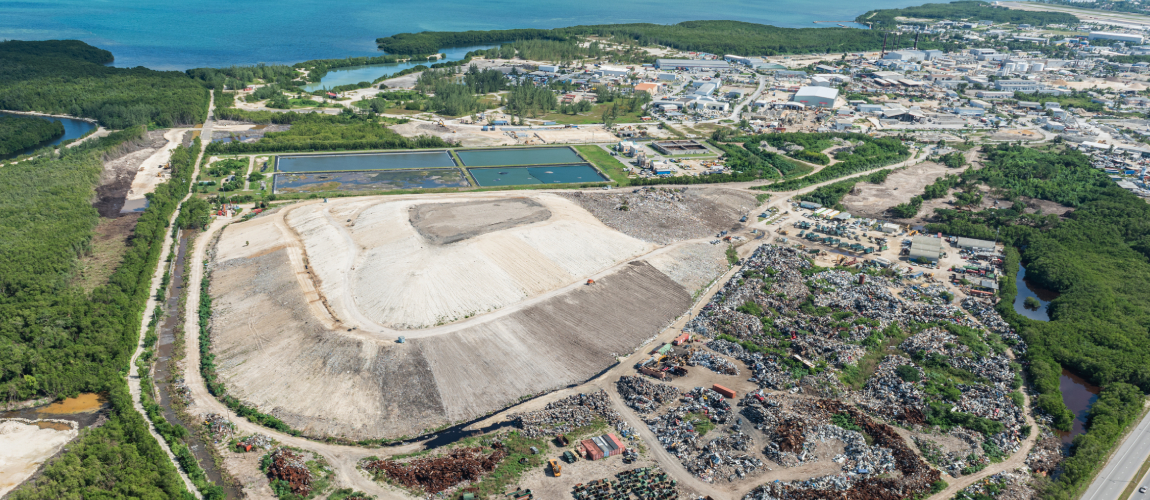
A key aspect of the public-private partnership between the Cayman Islands Government and Dart for an integrated solid waste management system is the remediation of the existing George Town Landfill.
International environmental consulting experts GHD have produced two reports, now available on the ReGen website, that assess the environmental impacts of the current landfill and demonstrate how remediation will make the George Town Landfill a safe neighbour to surrounding homes and businesses going forward.
The studies were developed in conjunction with Government and are separate from the project’s Environmental Impact Assessment (EIA) which is focused on the design and performance of the new ReGen facilities.
Risk-Based Assessment
A detailed Risk-Based Assessment compares the environmental risks posed by the existing landfill with and without a landfill cap.
Based on previous environmental reports and site-specific monitoring data from the George Town Landfill, the Risk-Based Assessment confirms that the existing landfill is impacting the natural environment, including nearby groundwater and air quality. While none of the contaminants have long lasting effects on human, animal, and plant life, the risks will continue for the foreseeable future without the provision of a landfill cap.
Adding a landfill cap removes the risks posed by the majority of contaminants and provides an overall reduction in contaminant concentrations compared to the status quo.
Remediation Options Report
Based on this data, the Remediation Options Report considered a spectrum of solutions for the George Town Landfill and determined the technical closure of the site to be the safest, most sustainable and affordable solution for the country. Technical closure includes capping the waste mound, managing the landfill gas and continued environmental monitoring.
Capping of the George Town Landfill began in March 2020 with an initial layer of fill. Once this layer of fill is complete, it will be covered by a synthetic liner and another layer of fill and topsoil to support the growth of grass and shrubs to create an attractive green surface that is resistant to erosion.
As organic waste continues to break down inside the mound, a network of wells and pipes is required to draw off landfill gas. Once ReGen’s energy recovery facility is operational, this gas can be used to generate electricity. In the meantime, it will be combusted in an enclosed flare to destroy odorous or noxious compounds, as well as methane, a potent greenhouse gas that makes up approximately 50% of landfill gas.
Throughout the process, safety and efficiency will be ensured by continued environmental monitoring. The net result will be a significant reduction in methane emissions and a safer, more attractive green space that, in time, will be open to the public.
Follow the links below for full copies of both reports:
